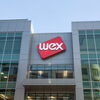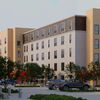Manufacturing's workforce is growing again, but is a long way from pre-recession numbers

Maine's manufacturing workforce, which declined sharply during the recession, has started a gradual rebound.
The state had 52,900 workers in manufacturing last year, compared to 50,100 in 2013, the post-recession low, according to the Bureau of Labor Statistics. The workforce is still dramatically smaller than that of 2001, when there were 70,300 workers, or 2008, when there were 56,700.
An estimated 5,900 manufacturing jobs were lost in 2009 alone, taking a disproportionate hit with about a third of the overall jobs lost.
Chuck Lawton, former chief economist at Planning Decisions Inc., says the recession hit manufacturing hard for a number of reasons. They were larger employers with larger workforces than trade and service sectors and had a greater vulnerability to international price competition and the global financial bust.
But he also argues that some of the older manufacturers “had been hanging on,” deferring maintenance and not reinvesting in new equipment. Paper mills would be an example of this.
“In that sense, recessions are like forest fires,” Lawton says. “They clear out the oldest, weakest employers leaving the economy bereft of the oldest, weakest businesses.”
The manufacturers that survived were the ones with newer equipment “built for more current demand,” while less burdened by old capital structures.
“These same manufacturers are built to be competitive in the newly globalized economy, many replacing global competitors who are too far away to compete with local, more modern and closer-to-U.S. market customers,” Lawton says.
Fast forward to today
Lisa Martin, executive director of the Manufacturers Association of Maine, says recent job growth can be attributed to federal tax reform. “That has enabled manufacturers to make more investments, hire more people,” she says
Will we ever get back to the number of jobs we had in, say, 2001? “It's hard to say if we will get back to those numbers due to a number of reasons,” Martin says. “Lack of a skilled workforce has caused some companies to automate.”
But a more lasting impact on workforce has to do with manufacturers' increased reliance on technology. There has been “a consistent change in the economy,” Martin says. “Lower skilled manufacturing has changed to a higher technology environment and companies are hiring more engineers, designers for more high tech products and applications.”
Lawrence Robinson, head of the Maine Manufacturing Extension Partnership, says manufacturers will undoubtedly have leaner workforces, but they can be more productive.
“These remaining jobs are more productive when measured per labor hour due to the addition of automation. In other words a person can accomplish more work per hour because they have better tools to assist them,” Robinson says.
Lawton says we need to change our mindset about what manufacturing is before we can expect to see the workforce grow.
“If we adjust our education/training institutions and our cultural status structures to recognize the ability of manufacturing to provide high-paying, challenging career paths for young people then, yes. If we continue to push college for all because manufacturing is dirty, dangerous and for the dumb, then probably not,” Lawton says.










Comments